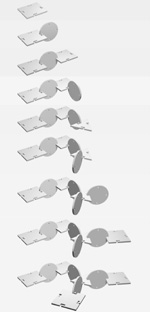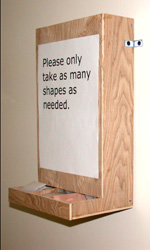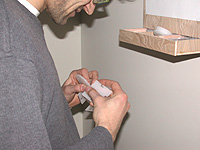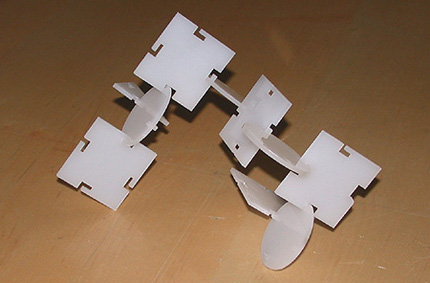Rules: after after |
Judaism Buddhism |
Islam |
paganism |
Tribal |
|||
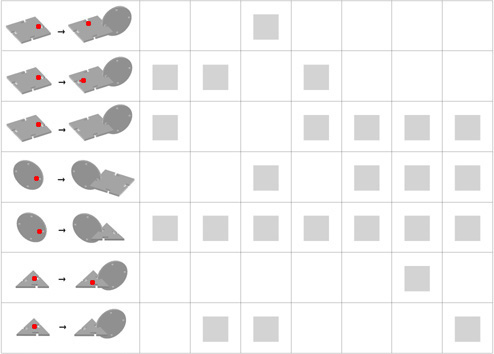 |
|||||||
 Red label indicates Red label indicatesplacement of next shape in the rule |
Please send feedback of this project to pablow@mit.edu, thank you | ||||||
By Pablo Wenceslao
|
Introduction
Religion can be said to be one of the first users of symbolic objects. Dating back to the time of early civilization and possibly even earlier, society has been using objects to represent a God, gods, deities, etc. This became the personal pursuit and interest for me during the semester. I find it fascinating that a method of torture and execution used by the Romans has become the symbol of Christianity or that a certain mineral such as jade can symbolize Buddhism and other Chinese religions. I believe that above all other objects, religious relics carry a history along with a relationship between object and person. In this way the person is connected through time to an event or religious lineage. Religion is strengthening by the symbolic object. It is what helps ground the virtual religion and manifest it physically. Almost every major religion has some sort of object or objects that serve to help people make a connection to their faith. The object becomes faith in material form and functions as a threshold. The common thread that runs through all religions is the need for a threshold. Whether the threshold is physical or virtual it is an essential link that allows man to move from the public to the divine. "The threshold that separates the two spaces also indicates the distance between two modes of being, the profane and the religious. The threshold is the limit, the boundary, the frontier that distinguishes and opposes two worlds—and at the same time where those worlds communicate, where passage from the profane to the sacred world becomes possible."
Selected Community
The uniqueness of this project was rooted in the idea that each faith would use the same three symbols for the communal, threshold, and the divine but differentiate itself from other faiths through spatial organization. The project created the ability to have common objects that produced different relationships through variance in order. The benefit of the project is that people can make physical comparisons and associations between religions. They were able to compare apples to apples instead of apples to oranges. What I mean is that if you were to compare a gold cross to a jade Buddha you would gain nothing from this comparison and only focus on the differences. On the other hand this project started off with a commonality and enabled the user to create the differences. The commonalties and the differences were evident but also didn't give hierarchy of one object over the other. This project was not a criticism on different religions but merely one-way of looking relationships within them. Scope of the Project
The project also required a distribution device. The design was a simple box with three slots that separated the different pieces and dispensed them from a hole in the bottom of the box (similar to that of bird feeder or slot machine). The user was instructed how to use the shapes through the use of a matrix that displayed how to attach the objects according to different religions. The project was installed in a public location near a threshold. In this case the threshold is between two different gathering spaces. The dispenser is placed strategically within the threshold to acting as a pause before passing through to the other space. Project Analysis Museum Display Scenario
Given the knowledge that I have now about this project I would do things differently if I had to install this in a museum. What I would do is that on opening day people would be allowed to enter the gallery and gather the shapes to create their individual relationships. I would not allow them to take the objects with them and instead have a place where people could hang or place their objects on display. The exhibit would then be about the assembled part not the individual piece. I think that by leaving the objects people may form more of an attachment to the object because of the direction to leave it behind. Within the exhibit I imagine a series of images that depict actual religious relics as a backdrop for the gallery. They would serve to stir emotion and further a connection to an individual's faith. Of course there would be a blank part of the wall for the atheist.
|

